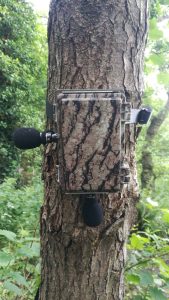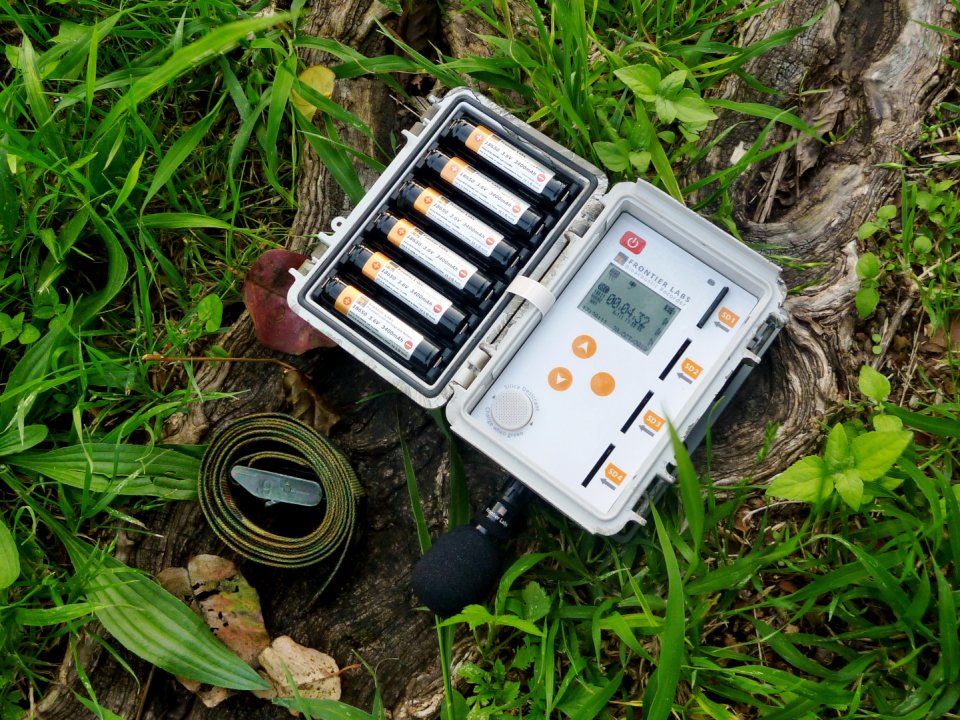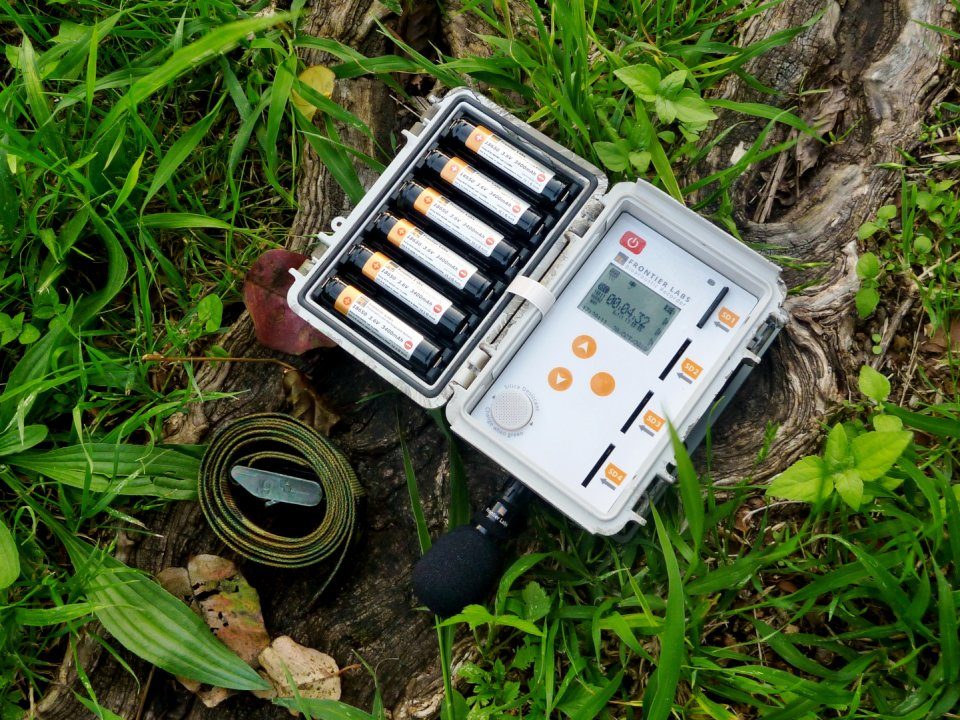BAR-LT Bioacoustic Recorder

The BAR-LT is a bioacoustic recorder manufactured by Frontier Labs. The recorder is designed to be deployed in the field over extended periods and can be programmed to record for set times. This type of acoustic recorder is ideal for monitoring bird song, frog calls, or even wolves. This kind of monitoring is often referred to as passive acoustic monitoring (PAM) and is becoming increasingly popular in biodiversity studies across the globe. Not only are these growing libraries of soundscapes important for current research and survey, but they also provide invaluable references for future research into both global and local scale biodiversity change.
The BAR-LT is a professional two-channel audio recorder designed specifically for long-term autonomous field deployments. It comes in a waterproof, lockable enclosure made from tough UV resistant plastic. It has space for four SD cards, each with up to 512GB storage capacity, meaning vast amounts of data can be recorded over one deployment. It is powered by 1-6 rechargeable 18650 batteries, providing 100-600 hours of recording time, and can also be powered using an external 6V or 12V power input. There are two microphone configuration options available: Standard (two-channels; one mic pointing left, one pointing downwards) and Left/Right. The omnidirectional microphones are highly sensitive and ultra-low noise, producing clear, crisp recordings.
We took the standard BAR-LT out to the field to record the dawn chorus.
How We Tested
We loaded the BAR-LT with a single memory card and four rechargeable 18650 batteries. We set a simple sunrise-based schedule, asking the recorder to record from an hour before sunrise to an hour after. The recorder then did the rest, using its in-built GPS to determine where in the world we were and therefore what time the sunrise was, basing start and stop times on this. We took the recorder to a nearby spot of woodland and fixed it to a tree using the included strap and a python cable lock (available separately) looped through the metal mounting plate at the back of the recorder.
What We Found
Although we could have left the BAR-LT out for an extended period of time, we only left it out for a single night on this occasion. When we collected it, the two-hour recording had successfully been completed, with minimal battery or memory drain. Upon listening to the dawn chorus, the audio was wonderfully clear, and the microphones were very sensitive. Some examples of audio and sonograms are below.




Our Opinion
The BAR-LT was very simple to set up and, although the scheduling capabilities are powerful, the settings are logical and easy to navigate. The battery life and memory capacity were outstanding, making the unit a really great piece of kit for any long-term deployments or for use in very remote locations where access is infrequent. We were also particularly impressed with the handy battery removal tool that came with the kit – it saved a lot of time fiddling with the batteries and also demonstrated how well-thought-out the kit is. The only part of the design that we weren’t so keen on was the metal backplate for mounting the unit, which is slightly larger than the unit itself and doesn’t have any grip teeth like most trail cameras do. The tree we were mounting the unit to was relatively small, meaning the backplate got in the way a bit, and only just fit a python padlock after a bit of a squeeze.
The recordings that the BAR-LT produced provided a wonderful soundscape and we were impressed with the quality of the recordings. There was very little ‘noise’ and the clarity of the recordings was evident, both when listening to the audio and when viewing the sonogram. The microphones picked up the sounds of the road surprisingly well, even though we thought we were far enough away to exclude them, demonstrating their impressive sensitivity.
We feel that the BAR-LT would be a great detector for conservationists and researchers who are looking to capture soundscapes for both current and future research. It performed well for bird song, but we think it would be equally as valuable to those wishing to record any terrestrial call. If you are interested in recording aquatic or low-frequency calls with the BAR-LT, please get in touch with us on customer.services@nhbs.com.
The BAR-LT is available through the NHBS website.
To view our full range of sound recorders and microphones, visit www.nhbs.com. If you have any questions on wildlife recording or would like some advice on the microphone for you then please contact us via email at customer.services@nhbs.com or phone on 01803 865913


